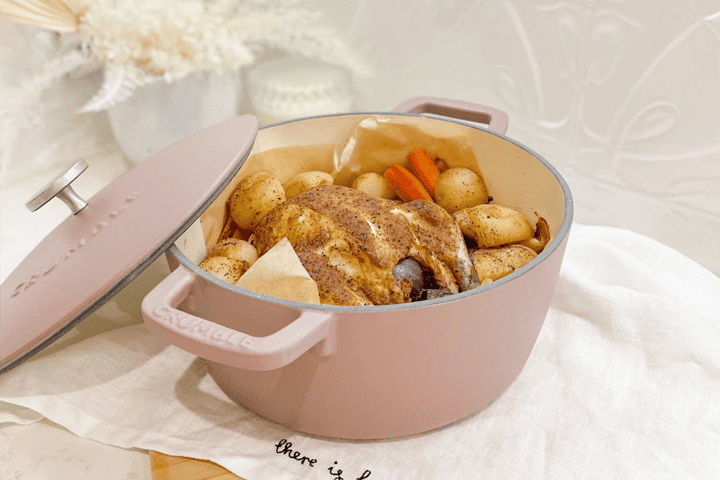This post contains affiliate links. Click here to read my affiliate policy.
Last Updated on January 21, 2022

The Dutch oven has been in existence for hundreds of years and, in many ways, the design of these pans today is the same as it was when they were invented in the 17th century.
A high-quality Dutch oven is made from cast iron. That means it is heavy but this allows it to retain heat. You can place the Dutch oven over a heat source or in the oven and simply leave it to cook. Not only is it simple but you’ll find it makes some stunning dishes.
However, as with anything kitchen-related, cooking means making a mess, and that means someone to clean all the pans and other items that have been used.
Naturally, the majority of these items are simply placed into the dishwasher. For the most part, it is quick and effective. However, there are still some items that are not safe to go in the dishwasher. When you have spent a reasonable sum investing in a high-quality Dutch oven you won’t want to risk it unless you know it’s safe.
The good news is that the majority of Dutch ovens can be put not the dishwasher. They are designed to take intense heat and shouldn’t have an issue with the heat of a dishwasher. But, it’s worth checking the manufacturer’s instructions first.
You should also note that many manufacturers recommend not putting the Dutch oven in the dishwasher although it can if necessary. The reason is they have an enamel coating that is non-stick and easy to clean. You don’t want this getting damaged in the dishwasher.
Putting the Dutch oven regularly in the dishwasher is likely to shorten the Dutch oven’s life as well as potentially damage its looks.
Cleaning Your Dutch Oven
Instead of putting your Dutch oven in the dishwasher, you can clean it yourself. This will ensure that the Dutch oven is properly cleaned.
- Use Soap & Water
The simplest approach is to use warm soapy water. That means using a little washing-up liquid with some warm water in a bowl and then immersing the Dutch oven while you wipe the insides of it. Because the Dutch oven is coated in enamel and non-stick, all the food debris on the pan should come off easily. In many cases, a simple wipe is all it takes.
- Nylon Brush
If you need to brush a little harder to get rid of stubborn pieces then the best option is to use a nylon brush. This will agitate the dirt without damaging the finish of the Dutch oven.
If necessary, it is also okay to use kosher salt to scrub the inside of the pan.
- Dry Slowly
Towel your Dutch oven dry and make sure every part of it is dried properly. You don’t want water residual that can help the oven rust.
It’s a good idea to put the Dutch oven in the oven at low heat to make sure it is completely dried.
- Oil If Necessary
If you feel the seasoning layer has been damaged then add a little oil to help restore it. Then, store your Dutch oven until you need it again.

